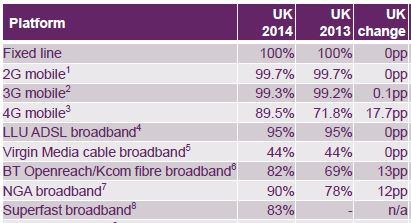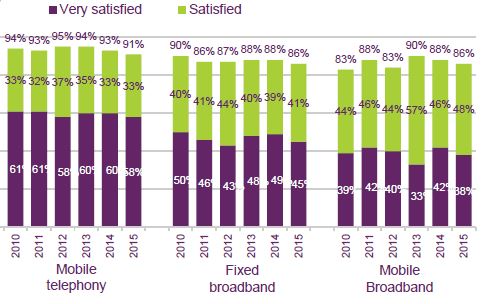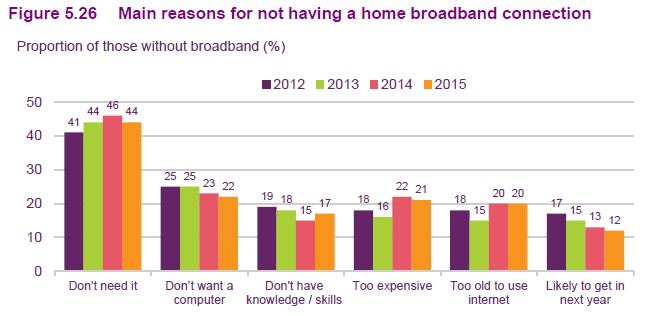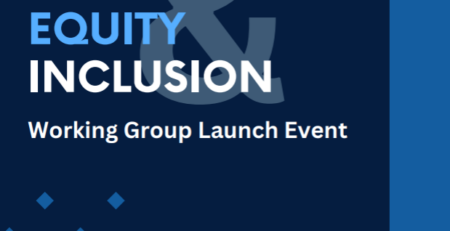Ofcom Communications Report: Selfies, devices and 4G
Ofcom today published their annual Communications Market Report which as usual is packed full of figures and data on the state of play in television, radio, telecoms, internet content and postal sectors. Most of the headline have focused on the number of selfies we are taking and the realisation that smartphones are now the most popular device for getting online.
Three areas that are particularly interesting are:
The trend of rising network capability accompanied by at best flat consumer satisfaction and falling telecoms revenues has continued.
The report drives home the improvements that have been made in the capacity and coverage of telecoms networks as 4G and superfast technologies have been deployed. As the chart below shows superfast broadband (24+ Mbit/s) is available to over 80% of premises and 4G coverage from at least one operator stands are around 90% of premises.
Take up of superfast and 4G connections stand at around 30%. This take-up has resulted in the growth of actual average fixed and mobile broadband speeds. The former growing from 5.2 Mbit/s in 2010 to today’s 22.8Mbit/s.
Despite this increase in capability consumer satisfaction, admittedly already high, has remained flat with mobile telephony decreasing slightly – as can be witnessed below.
As their ability to do more online has grown this suggests that it is at least partly due to their rising expectations – they are impatient in waiting for the extraordinary to become the ordinary.
This expansion has taken place against a backdrop of falling telecoms revenues with another 2% fall. Whilst there was some evidence that fixed operators are increasing revenue per user as they upgrade to superfast broadband the equivalent jump as users move to 4G doesn’t seem to have appeared.
4G – the game changer
Industry have been rolling out 4G services at a ferocious pace but 2014 looks as though it was the year it took off in the consumers eyes with subscriptions increasing from 2.7 million to 23.6 million – albeit including machine to machine numbers. Even taking into accounts Three shifting all of its customers onto 4G packages this is still remarkable growth.
Overall satisfaction of customers moving from 3G to 4G has been good, with 72% of respondents either satisfied or very satisfied. As important from a network point of view is what they are doing with that connection. As outlined in our ‘Out-of-home use of the internet’ 4G allows for greater speeds but also tend to have greater data allowances – both of which are important drivers for consumers.
What the report shows is that 4G smartphone users are more engaged with their devices, are more likely to consume data heavy content and are more likely to forgo WiFi when connecting to the internet. Arguably, is demonstrating the true potential of smartphones and closing the gap on users’ expectation of quality of experience between mobile and fixed.
I’m not getting it because I don’t need it
A short section on digital inclusion nonetheless had some insightful statistics. Adults with internet connections in the home again rose over the last year but interestingly 12% (down from 14% last year) said that they don’t intend to get it. Total non-users had a range of reasons (see below) for not going online but even when prompted 52% said there was no advantage to going online. In an age where we are starting to talk about digital detriment this is a huge challenge for the industry.







